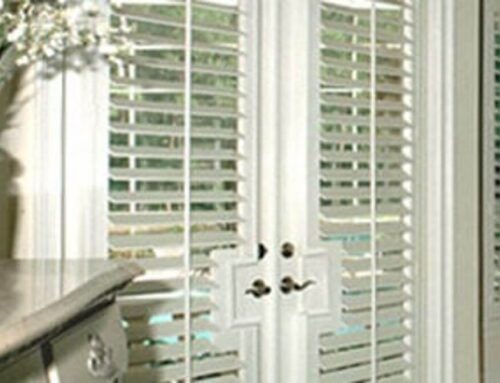Window treatments play a crucial role in enhancing your home’s energy efficiency by providing an extra layer of insulation. Treatments like cellular shades, heavy curtains, and plantation shutters can block heat from entering during the summer and retain warmth during the winter.
By controlling the amount of sunlight that enters a room, they help maintain a comfortable indoor temperature, reducing the need for constant heating and cooling, which ultimately lowers energy costs.
In addition to their insulation benefits, window treatments can also improve the overall efficiency of your HVAC system. By preventing drafts and heat loss through windows, they help your system maintain a consistent temperature throughout the house.
With the right window treatments, your home becomes more energy-efficient, reducing both your carbon footprint and utility bills, while enhancing the comfort and aesthetics of your living space.
How do window treatments improve energy efficiency in homes?
Window treatments improve energy efficiency in homes by providing insulation that helps regulate indoor temperatures, reducing the need for heating and cooling systems to work overtime. Here’s how they work:
- Insulation: Certain window treatments, such as cellular shades or thick curtains, create an insulating barrier between the window and the interior of the home. This helps keep warm air inside during the winter and blocks out heat during the summer, reducing the need for your HVAC system to maintain a comfortable temperature.
- Blocking Sunlight: Treatments such as blinds, shades, and plantation shutters enable you to control the amount of sunlight entering your home. By blocking out direct sunlight in summer, they prevent rooms from overheating, reducing the need for air conditioning.
- Preventing Heat Loss: Heavy drapes and thermal blinds prevent heat from escaping through windows during the colder months. This helps maintain a steady indoor temperature without overusing heating systems.
- Reducing Drafts: Well-fitted window treatments, such as thermal curtains or shutters, can seal gaps around windows, preventing drafts from entering and making the home more energy-efficient and comfortable.
By optimizing natural light and temperature control, window treatments can significantly reduce energy consumption and lower utility bills.
Can window coverings help reduce heating and cooling costs?
Yes, window coverings can help reduce heating and cooling costs by improving your home’s insulation and controlling the amount of heat that enters or escapes through your windows. Here’s how they work:
- Insulation: Certain window coverings, like cellular shades, thermal curtains, or heavy drapes, act as an insulating barrier between the window and the room. This helps retain heat in the winter and block out excess heat in the summer, reducing the demand on your heating and cooling systems.
- Sunlight Control: By adjusting blinds, shades, or shutters, you can control the amount of sunlight entering your home. In the summer, blocking direct sunlight reduces the need for air conditioning, while in the winter, allowing sunlight to enter can naturally warm your home, reducing heating costs.
- Preventing Drafts: Well-fitting window coverings prevent drafts from seeping in through gaps around windows, keeping the temperature inside your home more stable and less dependent on your HVAC system.
By optimizing light and temperature control, window coverings can significantly reduce the strain on your heating and cooling systems, leading to lower energy consumption and more affordable utility bills.
What types of window treatments are most effective for improving energy efficiency?
Several types of window treatments are particularly effective for improving energy efficiency by providing insulation, controlling sunlight, and reducing drafts:
- Cellular Shades: Also known as honeycomb shades, these are highly effective at insulating windows. Their design traps air in pockets, providing a barrier that helps maintain a stable indoor temperature by keeping heat in during the winter and blocking heat from the sun in the summer.
- Thermal Curtains and Drapes: Made with insulating fabrics or a thermal backing, these window coverings help prevent heat loss during the colder months and block excess heat during the summer. They create a strong barrier between the interior of your home and the outside environment.
- Shutters: Plantation shutters or interior shutters can improve energy efficiency by providing an added layer of insulation. When fully closed, their solid panels help regulate temperature by minimizing heat transfer through the window.
- Blinds: Wooden or faux wood blinds can help control the amount of light entering a room, reducing the need for air conditioning in the summer and allowing sunlight to warm the room in the winter. The ability to tilt the slats also allows you to control light and air flow for better temperature regulation.
- Window Film: Reflective or low-emissivity (Low-E) window films are a cost-effective option to enhance energy efficiency. They help block UV rays, reducing solar heat gain and protecting furniture from fading, while also maintaining more consistent indoor temperatures.
Each of these window treatments helps reduce the workload of your HVAC system, contributing to lower energy bills and a more comfortable home environment.
How can window treatments effectively regulate indoor temperatures?
Window treatments can effectively regulate indoor temperatures by providing insulation, controlling light, and reducing air drafts, all of which help maintain a consistent indoor climate. Here’s how they work:
- Insulation: Window coverings such as cellular shades, heavy drapes, and thermal curtains create an insulating barrier between the window and the room. This prevents heat from escaping during the winter and blocks unwanted heat from entering during the summer. Cellular shades, in particular, have air pockets that trap heat, enhancing their insulation properties.
- Sunlight Control: Window treatments, such as blinds, shutters, and shades, allow you to control the amount of sunlight entering a room. In the summer, blocking direct sunlight prevents rooms from overheating, reducing the need for air conditioning. In the winter, allowing sunlight to stream in can naturally warm the room, lessening the reliance on heating systems.
- Preventing Drafts: Well-fitted window coverings, such as thermal curtains or shutters, help seal gaps around windows, preventing drafts from infiltrating the room. By reducing the flow of outside air, they help maintain a more stable indoor temperature, reducing the workload on your HVAC system.
Through insulation, light control, and draft reduction, window treatments help stabilize indoor temperatures, making your home more energy-efficient and comfortable throughout the year.
Boost Your Home’s Efficiency with Energy-Saving Window Treatments
Our selection of high-quality blinds, shades, and shutters is designed to help regulate indoor temperatures by providing insulation, blocking unwanted heat, and reducing drafts. With the right window treatments, you can keep your home comfortable year-round while lowering heating and cooling costs.
Whether you’re looking to reduce energy bills or enhance your home’s comfort, our expert team at The Blind Man is here to help. Contact us today to find the perfect energy-efficient window treatments for your home!






